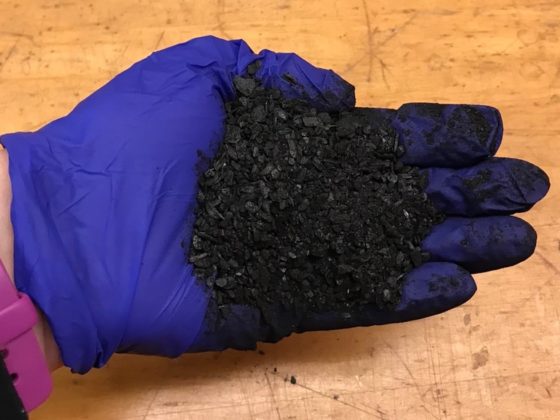The question as to how important the benefits of clean water are has preoccupied economists and policy makers for a while. Sheila Olmstead, professor at the Lyndon B. Johnson School of Public Affairs at the University of Texas at Austin, and member of the Council of Economic Advisers during the Obama administration, is addressing the question from a new angle, comparing costs and benefits for the Tampa Bay area in Florida. She presented a paper at the Batten School of Public Policy about the topic. We talked with her afterward.
Why study the costs and benefits of water quality improvements? The Clean Water Act came into effect in the early 1970s. Don’t we know by now that it is a beneficial proposition?
This is a great question. Unfortunately, we really don’t know enough about the impacts of the Clean Water Act (CWA) on water quality, and how (and how much) people value those impacts to say whether it has been a net beneficial proposition. Obviously, many formerly severe water pollution problems (such as flaming rivers) have gotten better since 1972. However, when economists have done benefit-cost analyses of the CWA, or of individual parts of the CWA, in some cases the benefits and costs are about even, and in some cases, it appears as though the costs exceed the benefits. This is very different from economic analyses of major air pollution regulations under the Clean Air Act, or even of analyses of drinking water regulations under the Safe Drinking Water Act. There are many possible reasons for this. For example, because people in the United States are not generally drinking raw water from rivers, lakes, and streams, the health benefits of reducing pollution in these water bodies may be small. And the vast majority of benefits from regulations on air pollution and drinking-water pollution are human health benefits. (I should note that studies suggest large health benefits to cleaning up rivers in places like China and India.) The regulations used to achieve ambient water quality improvements under the CWA also tend to be the most costly kinds of regulations—technology standards and other approaches that are very prescriptive, relative to something like a tax or cap-and-trade. Some of the benefit estimates for the CWA may also be missing important pieces—for example, if we have not really captured the recreational benefits of reducing pollution in rivers and lakes, then this could explain why the existing estimates are low relative to costs. Finally, over the past 30 years or so, there has been a revolution in the methods that economists use to estimate the impacts of regulations like the CWA (and many other phenomena), but there are very few recent estimates of the benefits of the CWA, and even fewer using these modern statistical methods. So I would say that until economists really throw our best stuff at this question, we can’t conclude much from the existing studies.
So why did you choose to study the Tampa Bay area? And what are the reasons behind the water quality improvements?
In choosing Tampa, we were motivated by three things. First, Tampa Bay is a rare example of a major water body that is in recovery from eutrophication—the low-oxygen conditions that resulted from many decades of excessive loading of nutrients (especially nitrogen), which caused overgrowth of algae and transformed the Bay’s aquatic ecosystem. While things aren’t perfect there, conditions in the Bay today are actually better in some ways than those last observed in the 1950s. The large gains in water quality over several decades provide an opportunity to look at what happens to housing markets in a place where nearby water is much cleaner than it used to be. Second, we were motivated by the incredibly rich data available in the Tampa Bay area—this includes data on water quality and on property characteristics and transactions. To do a really good job estimating the impacts of water quality improvements on property values, you need to control comprehensively for everything else affecting property values, and in this location, we have rich enough data to accomplish this. Third, we were motivated by a close collaboration with colleagues in the physical sciences at the University of South Florida, with whom we were working on a larger project about the economics of reducing nutrient pollution. When working on an environmental policy problem, it is always advisable for economists to find some help and support from colleagues who really understand the science of that problem, so we can get the basics of that right in our economic analysis.
I know this is work in progress, but what do you find? And why would this finding be important?
Our study has a few important preliminary findings. First, we find that it is incredibly important to capture the recreational benefits of water pollution control if you want to obtain a good estimate of the total benefits. Our study shows that, while people do value pollution control in the small lakes, rivers, streams, and other waterbodies in their neighborhoods, their values for pollution control in the places that they fish (which may be quite far from their homes) are much, much higher. This was not terribly surprising to us, but it is not something that has been captured very often in prior work. Second, we compare our benefit estimates from Tampa’s nutrient pollution reductions to a rough estimate of the costs, and show that under our most reasonable assumptions, the water quality gains they have achieved since 1998 have been net beneficial (the benefits have likely exceeded the costs). Third, I think we also raise some good questions about how these kinds of water quality improvements should be valued, and we point out that economists should not approach this problem in the same way that they have estimated air pollution benefits, for example. We hope that people will learn as much from our research design and this part of the discussion as they will from the actual conclusions about the benefits and costs of water pollution control in Tampa Bay.
Sheila Olmstead is Professor of Public Policy at the Lyndon Johnson School of Public Affairs at the University of Texas at Austin.





